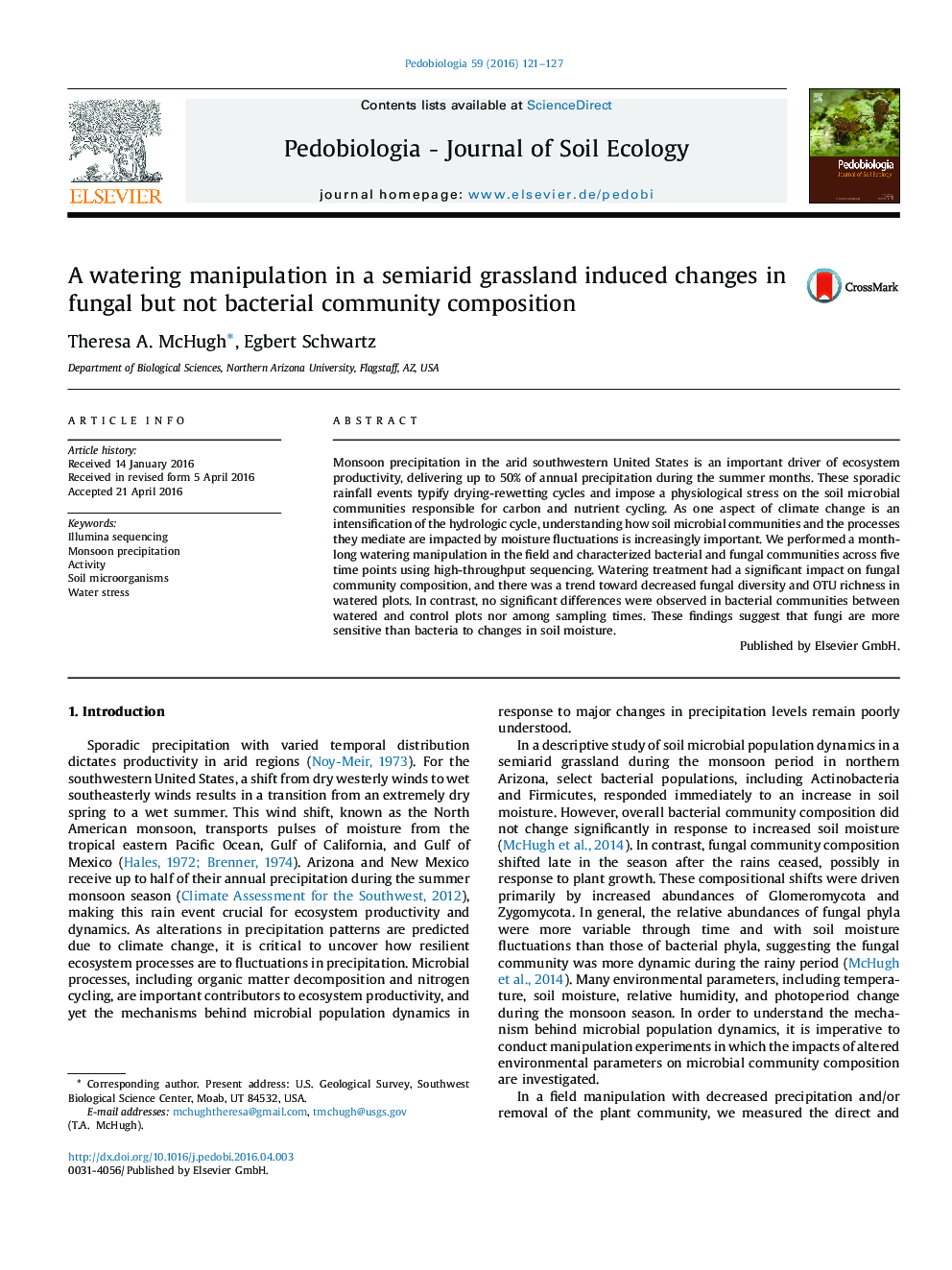| Article ID | Journal | Published Year | Pages | File Type |
|---|---|---|---|---|
| 2061000 | Pedobiologia | 2016 | 7 Pages |
•We analyzed the response of bacterial and fungal communities to watering in an arid grassland.•Watering treatment had a significant impact on fungal community composition.•There was a trend toward decreased fungal diversity and OTU richness in watered plots.•Bacterial community composition was not affected by watering.•Data suggest that fungi are more sensitive than bacteria to changes in soil moisture.
Monsoon precipitation in the arid southwestern United States is an important driver of ecosystem productivity, delivering up to 50% of annual precipitation during the summer months. These sporadic rainfall events typify drying-rewetting cycles and impose a physiological stress on the soil microbial communities responsible for carbon and nutrient cycling. As one aspect of climate change is an intensification of the hydrologic cycle, understanding how soil microbial communities and the processes they mediate are impacted by moisture fluctuations is increasingly important. We performed a month-long watering manipulation in the field and characterized bacterial and fungal communities across five time points using high-throughput sequencing. Watering treatment had a significant impact on fungal community composition, and there was a trend toward decreased fungal diversity and OTU richness in watered plots. In contrast, no significant differences were observed in bacterial communities between watered and control plots nor among sampling times. These findings suggest that fungi are more sensitive than bacteria to changes in soil moisture.
